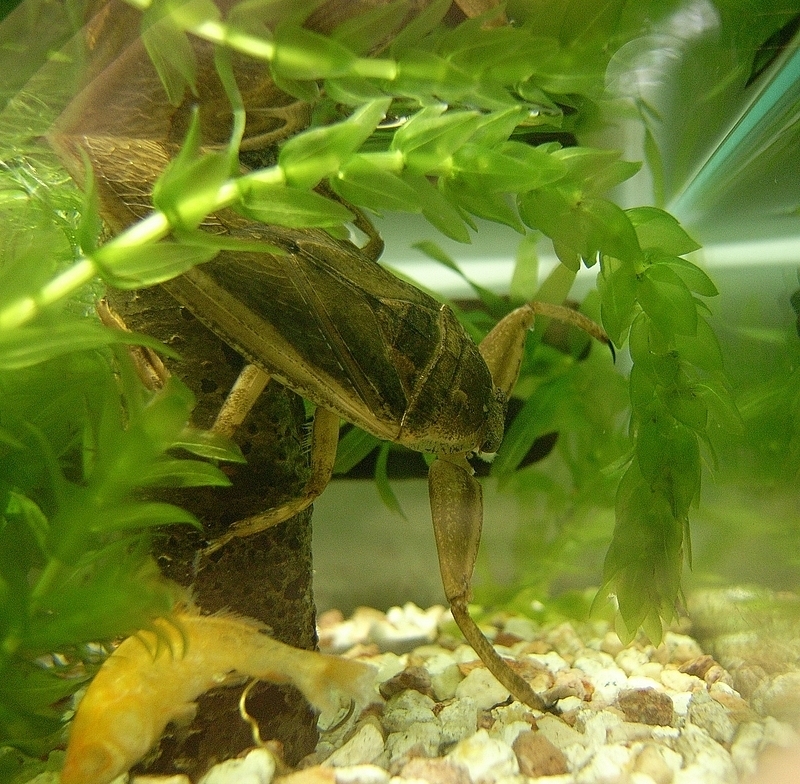- Lethocerus deyrollei
Taxobox
name = "Lethocerus deyrollei"

image_caption = "Lethocerus deyrollei"
regnum =Animal ia
phylum =Arthropod a
classis =Insect a
ordo =Hemiptera
familia =Belostomatidae
genus = "Lethocerus "
species = "L. deyrollei"
binomial = "Lethocerus deyrollei"
binomial_authority = "Lethocerus deyrollei" is a species of giant water bug (familyBelostomatidae ) in the genus "Lethocerus ". They are large (4.8 to 6.5 cm long), predatory and nocturnal insects. They live in still waters with vegetation, hatching in the summer months and thenoverwintering half a year later as adults.The eggs of this species are laid out of water, generally on vegetation. Males exhibit parental care by keeping eggs damp. This is achieved by climbing up to the egg mass and having the water drip off their bodies onto the eggs. Eggs that are not kept damp in this way fail to hatch.
Infanticide behaviour
Females of the species are known to destroy eggs guarded by males (ovicide, a form of infanticide), which secures care for their future offspring.Ichikawa, N. (1995) Male counterstrategy against infanticide of the female giant water bug "Lethocerus deyrollei" (Hemiptera: Belostomatidae). "Journal of Insect Behavior" 8:181-186.] It appears that a "counterstrategy" has evolved in males, which spend a much greater time with the eggs than is necessary to keep them wet. Most of the water is deposited on eggs within 90 seconds, but males have been reported to stay with eggs much longer than this. This is because males which stay with the egg mass cannot be detected by females. Brooding males will also attack female intruders, being successful in defending their eggs about one third of the time, though some are seriously injured in doing this.Ichikawa, N. (1991), Egg mass destroying and guarding behaviour of the giant water bug "Lethocerus deyrollei" Vuillefroy (Heteroptera: Belostomatidae). "Journal of Ethology" 9: 25-29.] Males will only put up a fight as eggs are first being destroyed, and have been witnessed to abruptly cease defending their eggs and begin copulating with the encroaching female.
Infanticide has also been recorded in another insect, the
burying beetle "Nicrophorus orbicollis ". [Trumbo, S. T. (1990). Reproductive benefits of infanticide in a biparental burying beetle "Nicrophorus orbicollis". "Behavioral Ecology and Sociobiology 27: 269-273.]References
Wikimedia Foundation. 2010.
